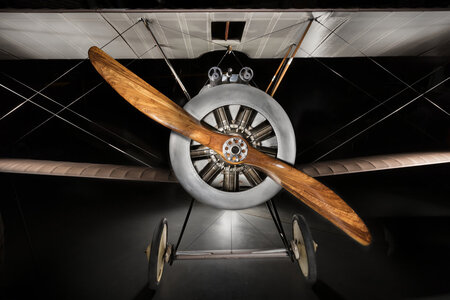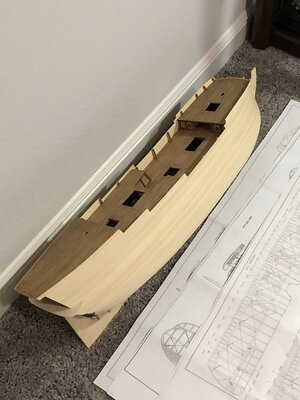Welcome to my build log! Let's start with the basics:
Norske Love – Billing Boats
Scale 1:75 = 101 cm (39.76 in) long x 90 cm (35.43 in) tall x 20 cm (7.87 in) wide
HISTORY:
The Norske Love (Norwegian Lion) was designed by Frederik Michael Krabbe, a naval officer and leading ship designer, and built in 1765 by the Nyholm shipyard, close to Copenhagen. The ship was originally named after the Norwegian Lion and the Danish-Norwegian Imperial Coat of Arms. All ornaments, made by the sculptor C. Moellerup, were reminders of Norway. On the transom, there is a fisherman and farmer, symbolizing the most important trades of Norway, agriculture and fishing.
Norske Love was the second built from a series of three, the two others being Printz Friderich and Dronning Caroline Mathilde, later renamed Oresund in 1772.
She was a 3 mast warship, length 48.93 m, breadth 9.70 m, draught 5.07 m, displacement 1,076 tons. There was a normal crew of 667 men and an armament of 70 cannons. She mounted 26 cannons (24 pounders) on the lower deck, 26 cannons (18 pounders) on the mid deck and 18 cannons (8 pounders) on the upper deck. The Norske Love was used as a guard ship in Oresund and other Danish waters.
In 1789 it was equipped as a guard ship to protect Russian ships in the Danish waters. In 1795, after having been stripped into a block ship, she was used to give shelter for homeless families after the fire in Copenhagen that same year. In 1798 she was deleted from the naval register.
In addition, according to the history of the Royal Danish Navy, there were other ships named the Norske Love, prior to the one the model represents. The list is as follows:
Norske Love (1634-1653), Norske Love (1654-1665), Norske Love (1666-1679), Norske Love (1680-1715), Norske Love (1735-1764), Norske Love (1765-1798)
The Danish-Norwegian warships were, until 1780, tared with a very dark brown color, after which they were painted black with light-yellow battery lines – the so called “Nelson Look” The decks were light tar-colored and the gun carriages were red.













